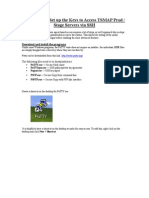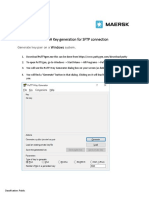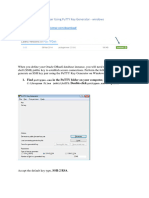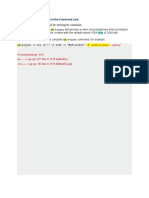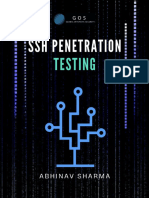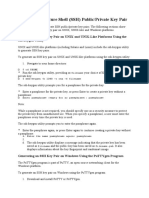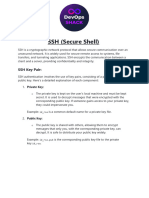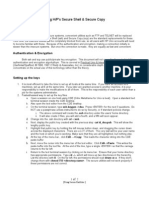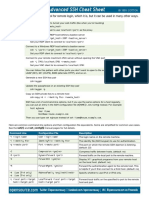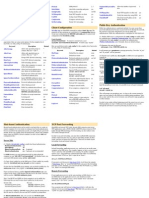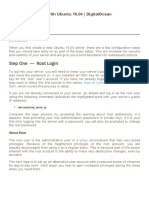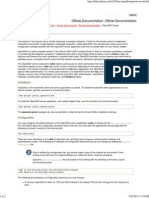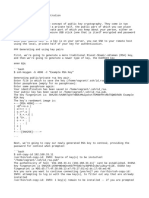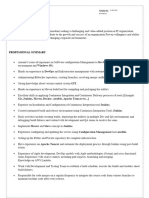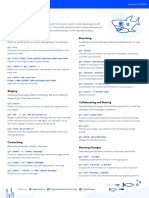0% found this document useful (0 votes)
73 views6 pagesManually Generating Your SSH Key in Windows
This document provides instructions for generating SSH keys on Windows using two applications: PuTTY and Git Bash. It outlines the steps for creating SSH keys with PuTTYgen and uploading them to a Triton account, as well as generating keys using Git Bash. The document emphasizes best practices for key management and security, including the use of passphrases.
Uploaded by
alaa faragCopyright
© © All Rights Reserved
We take content rights seriously. If you suspect this is your content, claim it here.
Available Formats
Download as PDF, TXT or read online on Scribd
0% found this document useful (0 votes)
73 views6 pagesManually Generating Your SSH Key in Windows
This document provides instructions for generating SSH keys on Windows using two applications: PuTTY and Git Bash. It outlines the steps for creating SSH keys with PuTTYgen and uploading them to a Triton account, as well as generating keys using Git Bash. The document emphasizes best practices for key management and security, including the use of passphrases.
Uploaded by
alaa faragCopyright
© © All Rights Reserved
We take content rights seriously. If you suspect this is your content, claim it here.
Available Formats
Download as PDF, TXT or read online on Scribd
/ 6


